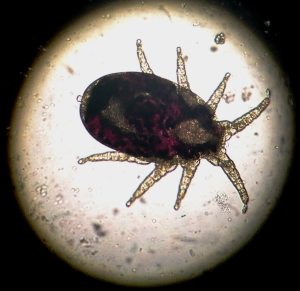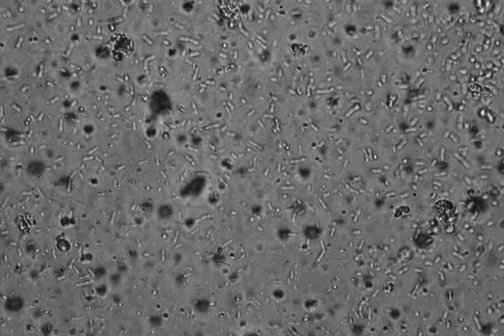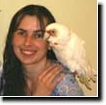
THE most important question you’ll ever answer
Whenever you bring new birds into your aviary or bird room…even before you set out to see the potential new birds or visit a local bird fair, you need to have decided if you are going to quarantine the new birds when you return home. The reason that I say that this question must be decided before you leave the aviary is because if you are going to quarantine, the cage should be prepared and waiting for its new residents. The quicker that you can settle them into their new home, the less stress they will have to endure.
Why Quarantine…
Every domesticated bird possesses immunity that is based upon the environmental conditions under which it was raised and has been living. Contributing to this immunity will be the diet it has been fed as well as what type of pathogens it has encountered along the way. If this was a wild caught bird that has spent time at an import quarantine station, it would have been treated for some organisms at that time, but a wild caught bird may need more treatments after you bring it to your own aviary. Even if the new bird was raised domestically by someone that you know, it may still have encountered and be carrying organisms than your current flock have never encountered and have no immunity against.
The quarantine period is for the benefit of both your current flock, as well as the new birds. Both sets of birds were raised and living under different conditions which have the potential to adversely affect the other set of birds. So if you were to ask me whether you should quarantine your new bird(s), I would have to say…absolutely….YES! So you need to be prepared to have additional cages available any time you are going to bring new birds into your existing flock.
In my own aviary/bird room, I have only one common ventilation system, and do not have an isolation room where I can house new arrivals, so I have always had to bring my new purchases into the same air space as the rest of my flock. But under no circumstances have I ever housed (in the same cage) any new birds with any bird from my existing flock. In fact, if I have purchased multiple birds from different vendors (say at a bird fair) I will transport them home in separate travel cages and house each bird in a separate cage while it is in quarantine. This way I am able to observe each bird’s droppings from the beginning. The droppings can be a good indication of the health of the bird after it has had a period of settling into its new surroundings.
My procedures have changed…
Any of you that are familiar with my quarantine procedures from my previous website will remember that I used to put the new arrivals thru a series of medications, without regard to where they came from or what problems they may have had. That was the old Laraine. I now know better than to recommend using any medication without knowing that there is a need for it. So please disregard anything that you may have read that I have previously written that you do not find on this new website www.ladygouldian.com.
First things first…
As soon as I have chosen the birds that I want to purchase, while I am still at the breeder’s home or the bird fair, I supply the birds with drinking water that contains either NV Powder or Quik-Gel in order to help them thru the stress of moving from one home to another. Both of these products will supply needed electrolytes and energy. You could also use any number of electrolyte products on the market today…Vitalize, Energize or Guardian Angel are some that I know to be good substitutes for those that I use. If you do not have access to any of these products, then you could use either Pedialyte or Gatorade, mixed 50/50 with water. I prefer the products made specifically for birds as most of them also contain needed vitamins and minerals to boost the immune system.
When I arrive back at the aviary the birds are settled into their already prepared cage with my seed mix, or one that I obtained from the breeder, to help insure a smooth transition. Adding some Spray Millet also helps because most finches relish it. I supply drinking water in an open bowl so that the bird(s) can easily find it and will not dehydrate. There will be plenty of time while the birds are still in quarantine to wean them over to my water bottle system when they have become accustomed to their new home.
I mix the electrolyte water fresh each morning and leave it as their sole source of drinking water for 5 days. During that time I observe them for activity and visually monitor their droppings for any signs of change. The stress of the move and the electrolyte formula will loosen the droppings, so I do not expect to see the droppings firm up into normal droppings until after I remove the electrolyte formula from the water.
Air Sac Mite treatment…
In most instances, the birds that I am bringing home will be Lady Gouldian Finches or Canaries, but in recent years I have purchased several pair of waxbills too. The fact that air sac mites are found in every Lady Gouldian and Canary kept in captivity today, leads me to my next treatment, which would be S76 to eliminate the adult population of air sac mites that are present. I always use the initial S76 treatment for new birds which would be 2 consecutive days each week for 3 weeks, mixed fresh each morning.
 The high level of stress placed upon a bird that is moved from one environment to another will suppress the bird’s immune system. With the immune system suppressed, your new birds will be unable to control the development of the dormant nymph stage of the air sac mite living in the posterior air sacs into adult air sac mites, thus quickly increasing the adult population of air sac mites in their upper respiratory tract. It is an excessive population of this adult stage of the air sac mite that causes the noisy symptoms that most of you are probably familiar with…raspy, wet wheezing, coughing, sneezing, open mouth breathing accompanied by tail bobbing. By keeping the adult population down to an absolute minimum, you should never hear these symptoms and run the risk of loosing your birds. For more information on air sac mites CLICK HERE.
The high level of stress placed upon a bird that is moved from one environment to another will suppress the bird’s immune system. With the immune system suppressed, your new birds will be unable to control the development of the dormant nymph stage of the air sac mite living in the posterior air sacs into adult air sac mites, thus quickly increasing the adult population of air sac mites in their upper respiratory tract. It is an excessive population of this adult stage of the air sac mite that causes the noisy symptoms that most of you are probably familiar with…raspy, wet wheezing, coughing, sneezing, open mouth breathing accompanied by tail bobbing. By keeping the adult population down to an absolute minimum, you should never hear these symptoms and run the risk of loosing your birds. For more information on air sac mites CLICK HERE.
Wait and see…
During the next 3 weeks, while completing the weekly treatments for air sac mites, I watch the droppings of the new birds very closely. I change the paper in each cage every day so that I can see any obvious changes in the droppings should they occur. S76 does kill some intestinal worms, so an improvement in the droppings of any birds carrying worms will be evident. S76 does not kill tapeworms, so if you have purchased any birds that
● you know to be wild caught
● were living outdoors and had contact with soil
● or who are eating live food
you should also do a de-worming treatment immediately following the first 2 day treatments with S76. Worm Away is a good de-wormer that you can use, but there are others available as well. If you are treating Gouldian Finches for worms it is recommended that you DO NOT use a wormer containing Levamisole which may be toxic to Gouldians.
For the next 2 months I simply continue to observe the new birds and watch to see that they are adjusting well to the diet, do not appear stressed in any way, and appear happy and healthy. I no longer do any other medication treatments unless I have found evidence of a problem.
● If a bird is not infected with any protozoa organisms like Giardia, Cochlosoma or Trichomonas, treating them with Ronidazole is not going to kill anything or act as a preventative against future infections by those organisms.
● If a bird is not infected with E coli or Coccidiosis, then treating them with Trimethaprim Sulfa is not going to kill any E coli or Coccidiosis organisms and will not prevent them from ever being infected with E coli or Coccidiosis in the future. Unnecessary antibiotic treatments could potentially cause a yeast infection they did not already have.
● If a bird is not infected with a bacterial respiratory infection, treating it with Amoxicillin and Tylosin will not kill any bacteria and will not prevent them from ever being infected with Strep or Staph infections in the future Unnecessary antibiotic treatments could potentially cause a yeast infection they did not already have..
Medications kill specific organisms when they are administered and if the organism is not present to kill, you could throw your bird’s finely tuned immune system into an imbalanced state. So please, do not administer a medication at the 1st sign of a problem unless you know exactly what the problem might be.
If you find a bird in a distressed state (fluffed and frumpy or listless), you should use one of the electrolyte/glucose, vitamin/mineral supplements mentioned earlier in this article, to keep the bird energized and hydrated until an accurate diagnosis can be found.
Microscope usage for detection…
At this point, I would like to introduce you to the idea of purchasing a microscope so that you will be able to more closely monitor the health of your flock from day to day, and also have a better handle on the pathogens infecting them once a problem begins to surface.
I actually purchased a microscope back in 2004, but for one reason or another, kept putting off even taking it out of the box. I even convinced myself that I had learned to diagnose a problem by looking at the droppings. And in a lot of instances I could tell what was happening in my own flock by the changes that took place in the color and consistency of the droppings. But I had an eye opening experience in May of 2010 when one of my juvenile Gouldians began to produce very strange, dark brown, watery droppings.
My past experiences with curing brown, watery droppings had never been successful, and I never really knew what caused them. So this time I decided that since I had the microscope, I was going to have a look at these droppings under the microscope.
First I had to purchase some saline solution at the pharmacy and I’d be ready to go. With saline in hand I got the microscope out of the box, all the specimen slides and cover slips that came with it, and prepared a slide following the directions in my handy little book, Under the Microscope by Dr. Danny Brown.
I had not looked into a microscope since high school, which I can guarantee you, has been a long, long time ago in a galaxy far, far away. It took me a while to familiarize myself with all the knobs on the microscope, but once I figured out what each one did, I jumped right in and started looking at my slides.
I was totally blown away by the images that I saw through those eye pieces. It is an amazing world thru that lens. I kept comparing the images that I saw with various examples in the microscope book by Dr. Brown, but all of the large artifacts that I saw proved to be non-pathogenic. There was one thing however, that quickly caught my eye…those small, white rods that were literally jumping all around the images.

Since I wasn’t sure what these rods were, I needed to take some photos of them and send them to people who could help me identify them. Taking photos has proven to be the difficult part of using a microscope. At least in my case, what I am seeing through the microscope lens never appears as sharp in the photos that I have taken. But in this instance, both Dr. Rob Marshall and my friend, Kristen Reeves recognized the little rods as E coli.
I would never have suspected E coli because that bacterium normally produces pale grayish green droppings in finches. As the treatment with Trimethaprim Sulfa continued and the E coli rods began to disappear, he did not seem to be recovering. What I discovered in the case of this one juvenile was that he was infected with more than just E coli. Unfortunately he died before I was ever able to find out what else he was infected with. A necropsy was performed by Kristen Reeves and we found both an intestinal blockage and other bacteria in his digestive tract as well as some of his other organs.
Even though I did lose this juvenile, this experience did teach me that you really cannot accurately diagnose a problem just by looking at the droppings. A microscope is the most valuable tool you can have in diagnosing problems in your birds, especially if you do not have a local avian vet to take your birds to for diagnosis and treatment.
Correct Length for a Quarantine…
Because I have quite a few birds in my flock, whenever I bring new birds into the aviary they are quarantined for at least 3 months. If the new birds are purchased from a broker, are wild caught waxbills that have spent time in a quarantine station, or I know little about their past history, they will remain in a quarantine cage for up to 6 months. However, even with all these precautions, there still remains the possibility of transferring a foreign pathogen to your existing flock because there are some pathogens of which a bird can be a “carrier” or that will not present themselves until they have infected another bird which has no natural defense against it.
This process, of course, works both ways. Once the new birds are introduced into the same cage space as your existing flock, you may still run the risk of cross infection from pathogens that the birds have no immunity against because they have never been exposed to them before. Unfortunately, this is just the fact of life in bringing new stock into your aviary. So you will have to be prepared that you may lose some birds even after the quarantine is completed. But don’t give up, bringing in new stock is always necessary to insure unrelated pairs.
Always buying from reputable breeders is the primary way that you can hope to obtain quality birds. Even this may not insure that you will receive birds that will not bring in pathogens that your own birds have never experienced and have no immunity against. However, it is a far better way of buying new stock than going to someone about whom you have no knowledge of their husbandry practices.
Always ask questions…
I recommend that you always ask as many questions as you need to feel comfortable with the breeder, before purchasing the birds. If the prospective breeder is not forthcoming with answers, I would recommend looking elsewhere for your birds. The lives of your existing birds depend upon the health of the new birds and asking questions could prevent the disappointment of loosing birds down the road.
If the species that you are working with are not plentiful and you are forced to buy the birds from a broker who sells wild caught birds, please take all the precautions that I have discussed above to insure as safe a transition for yourself, your existing flock and the newcomers to your aviary.





